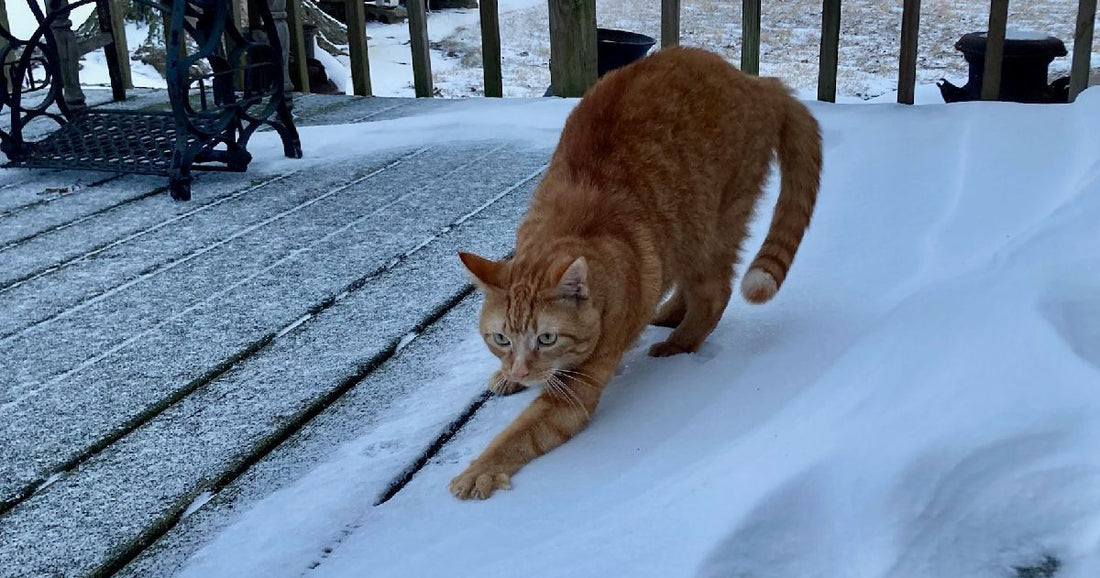Can Cats' Paws Suffer Damage from Snow or Other Winter Elements? How Harsh is Too Harsh?
Rebecca West
Cats are generally averse to cold, snowy conditions but good luck getting them to willingly don protective wear of any type or keep it on even if you manage to wrangle them into it. And you can forget about booties. Have you ever seen a cat get tape on their paws or cellophane? It's a frantic and peeved herky-jerky dance until it's removed. So, what can pet owners do for indoor/outdoor cats come winter if they live someplace where it snows?
 Photo: KK
Photo: KKSnow & Cats
First off, let's clarify that some cats will allow their humans to dress them up. Most, however, loath it. If that sums up your cat's response to playing dress-up, then you're probably unsure of the best ways to protect them from the elements. According to The Honest Kitchen:
"Walking in the snow a cat's paws are susceptible to ice and snow. While it might be easy to assume their bodies will naturally protect them from the weather, their paws are extremely vulnerable when the temperature drops. Ice can get stuck in between their toes, causing frostbite to set in. Hook your cat up with some beautiful booties so she can slink around outdoors for a little longer each day. If your cat is the type to refuse to wear socks or booties, no matter how fashionable they may look, it's important to inspect her paws after each trip outside. Look for ice build-up and any cuts that need to be cleaned."
 Photo: KK
Photo: KKSnow Salts and Ice Melts
Another thing to be concerned with are salts used for icy conditions. Most ice melts contain salt, such as sodium chloride, but they can also include magnesium, potassium, and calcium salts. Urea is another common ingredient as well as glycols. These frequently used ingredients aren't poisonous in small amounts but they can irritate skin and cause stomach upset when ingested.
It's recommended that you inspect your pets' paws when they come inside after a romp in the snow. Remove clumps of ice from between their toes and pad and make sure there are no cuts or abrasions. Next, wipe them gently with a damp cloth to remove any chemicals they may have come into contact with for de-icing, and then pat them dry with a soft towel before turning them loose.
 Photo: KK
Photo: KKPet Health in Winter
If you have a doggy door or a cat flap, place a plump towel or a thick rug in front of it so that it helps dry their paws on re-entry. That way, if you're not home or otherwise distracted, their adorable feet and the tiny toe beans attached to them will have a better chance of drying with somewhat less film or debris attached. Finally, consider a product like a paw balm if you notice cracks or cuts. You can find one at The Animal Rescue Site Store by Healthy Breeds. Each purchase helps feed shelter pets!
 Photo: Healthy Breeds via The Animal Rescue Site Store
Photo: Healthy Breeds via The Animal Rescue Site Store
